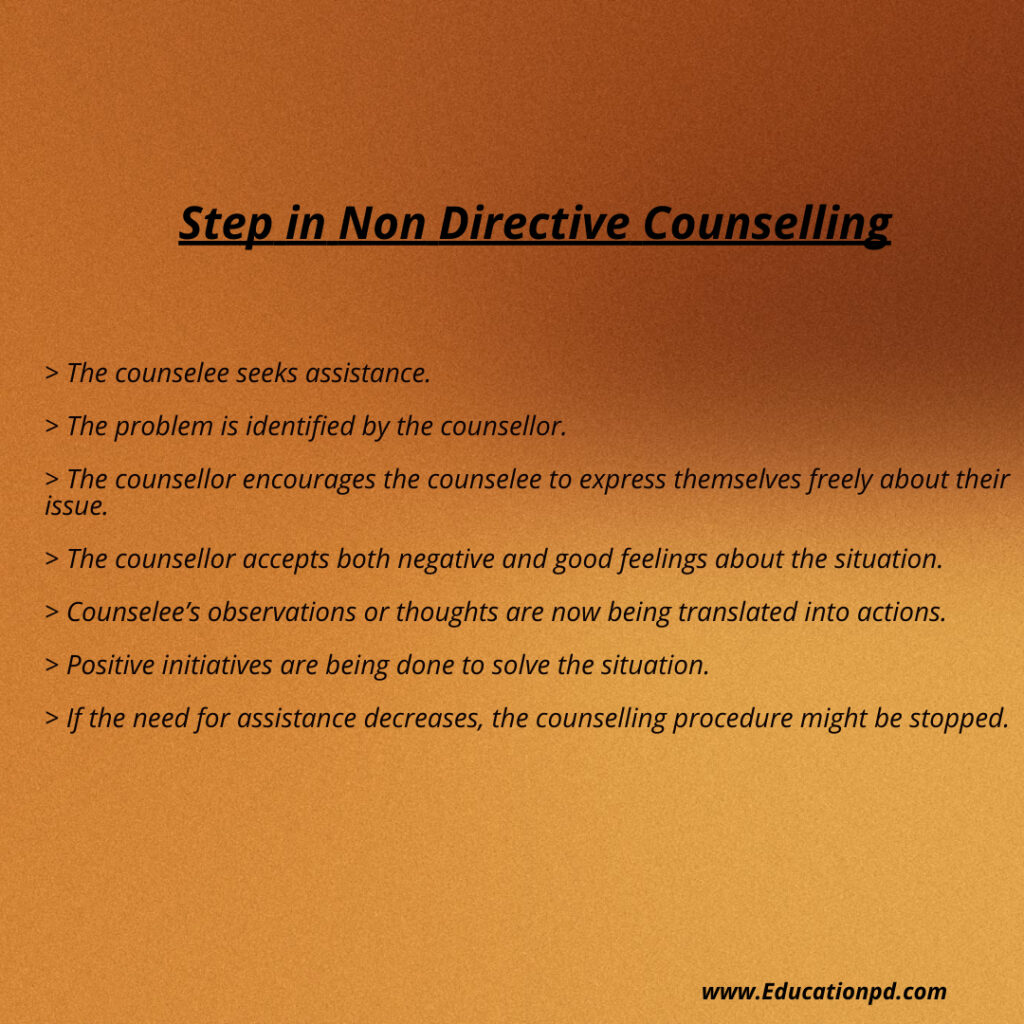Back to: Guidance and Counselling in Education B.ed Notes, M.A Notes, IGNOU Notes
Difference Between Directive and Non Directive Counselling
Directive counseling
- B. G. Williamson provided this style of counselling.
- In this style, the counsellor takes an active part and makes judgements or makes suggestions to the counselee, implying that the counsellor plays a significant role.
- This strategy, according to Williamson, is useful for educational and occupational concerns or problems.
- In this form of counselling, the problem takes centre stage, and solutions are provided on that basis, implying that counselee behaviour is given less weight.
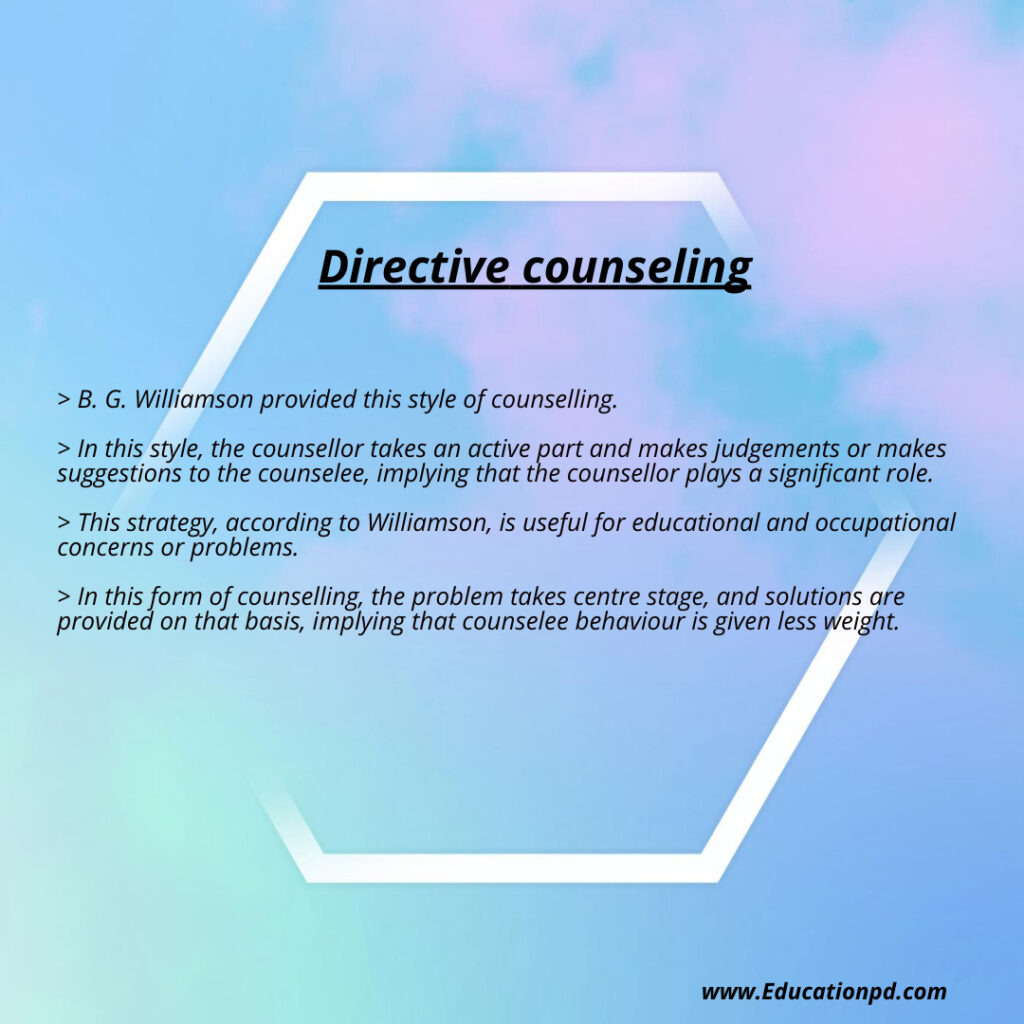
Merits of Directive Counselling
- Time saving
- Gives satisfaction to the counselee
- Importance is on the intellectual instead of the emotional aspect.
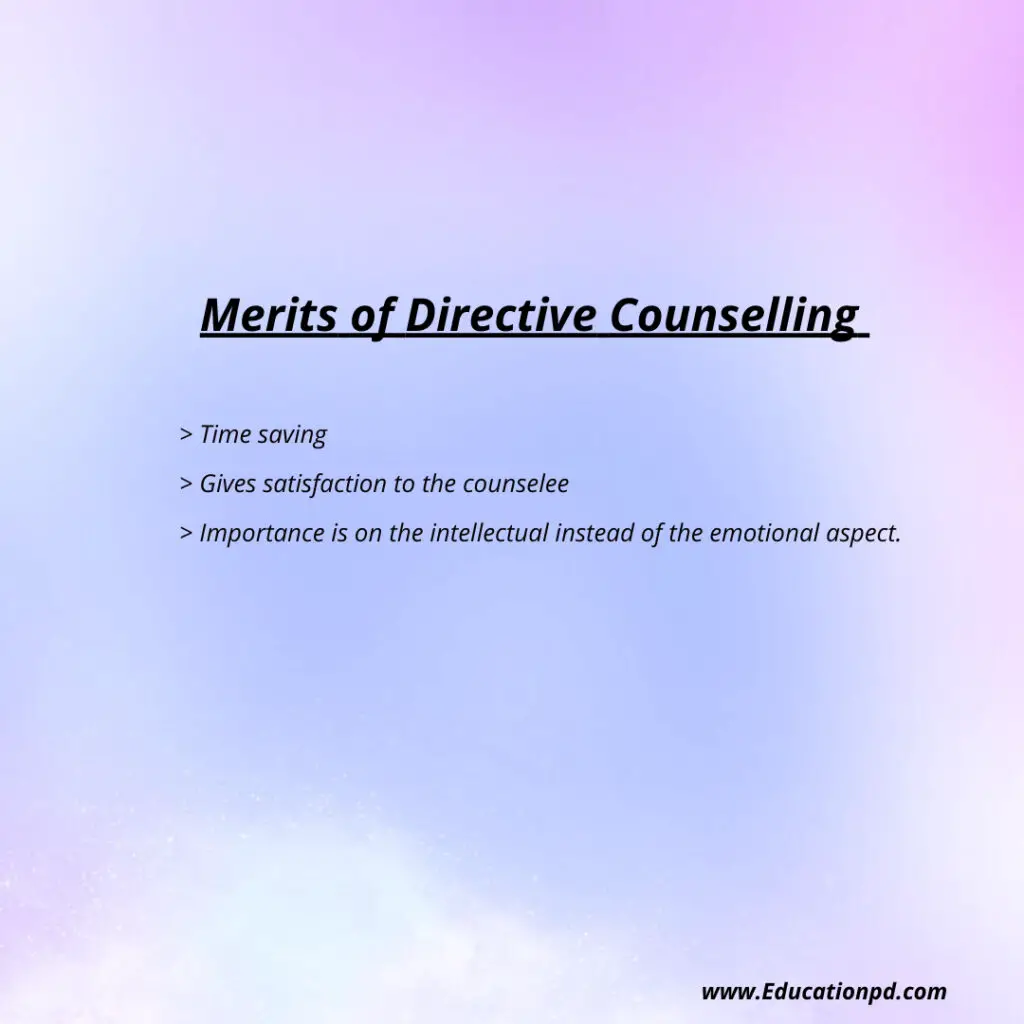
Demerits of Directive Counselling
- Counsellor is in central position
- Counselee totally depends on counsellor.
- Non-democratic.

Steps in Directive Counselling
- Analysis: in this collection of information take place through interview, conversation with counselee or their family members or friends, etc.
- Synthesis: then the data is organised and summarised in the proper format to identify potential, liabilities (TRI), habits, etc. Of the client.
- Diagnosis: In this step problems and their cause is identified.
- Prognosis: In this step, the future development of the problem is predicted.
- Counselling: in this step, the counsellor can suggest bringing out adjustments.
- Follow-up: From time to time follow-up is done.
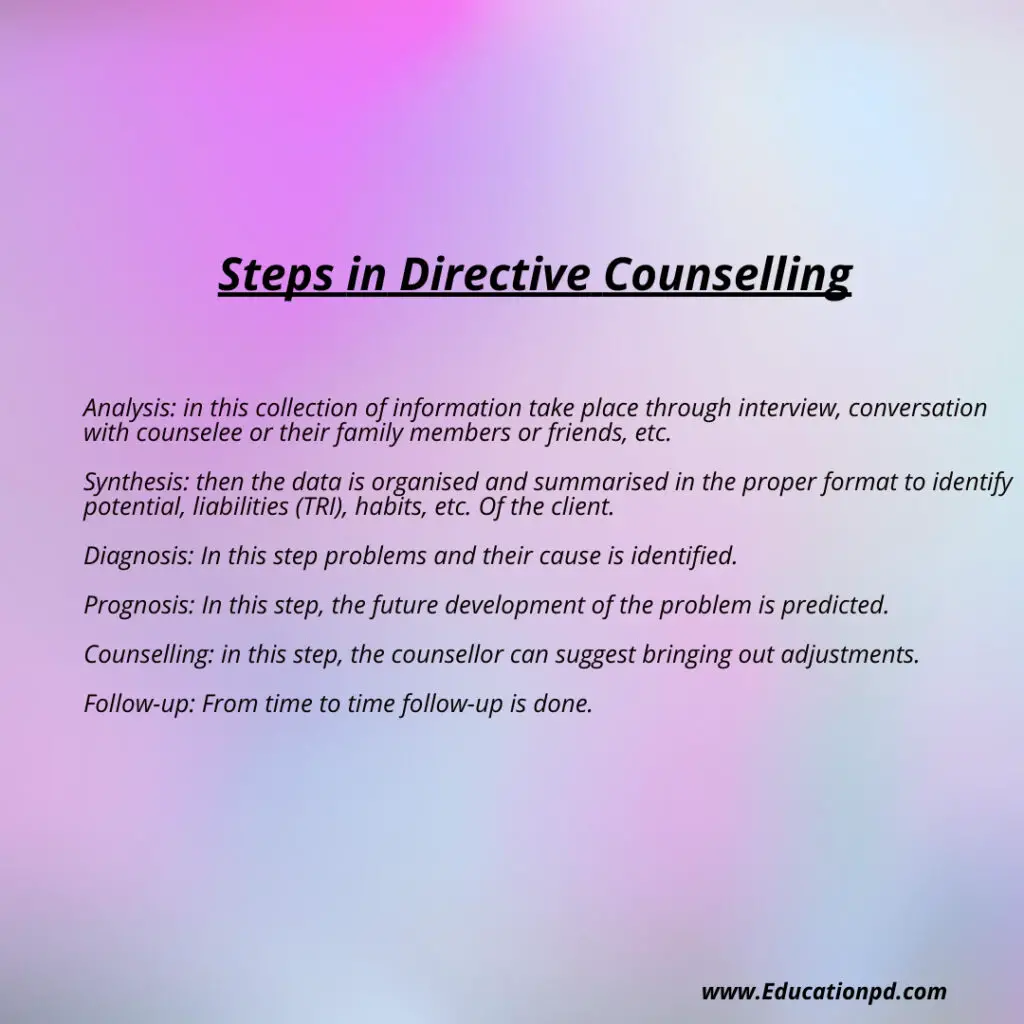
Non-Directive Counselling
- Carl Rogers (primary proponent) developed this practise, which is also known as Client-Centered Therapy.
- The counselee is free to express himself or herself in this approach, and the counsellor just leads and directs.
- In this technique, the counselee understands their situation with the support of the counsellor and has an active role in deciding what to do about it.
- The counsellor’s position is passive in this case.
- The emotional side takes precedence over the logical aspect in this strategy. The democratic approach is used here.
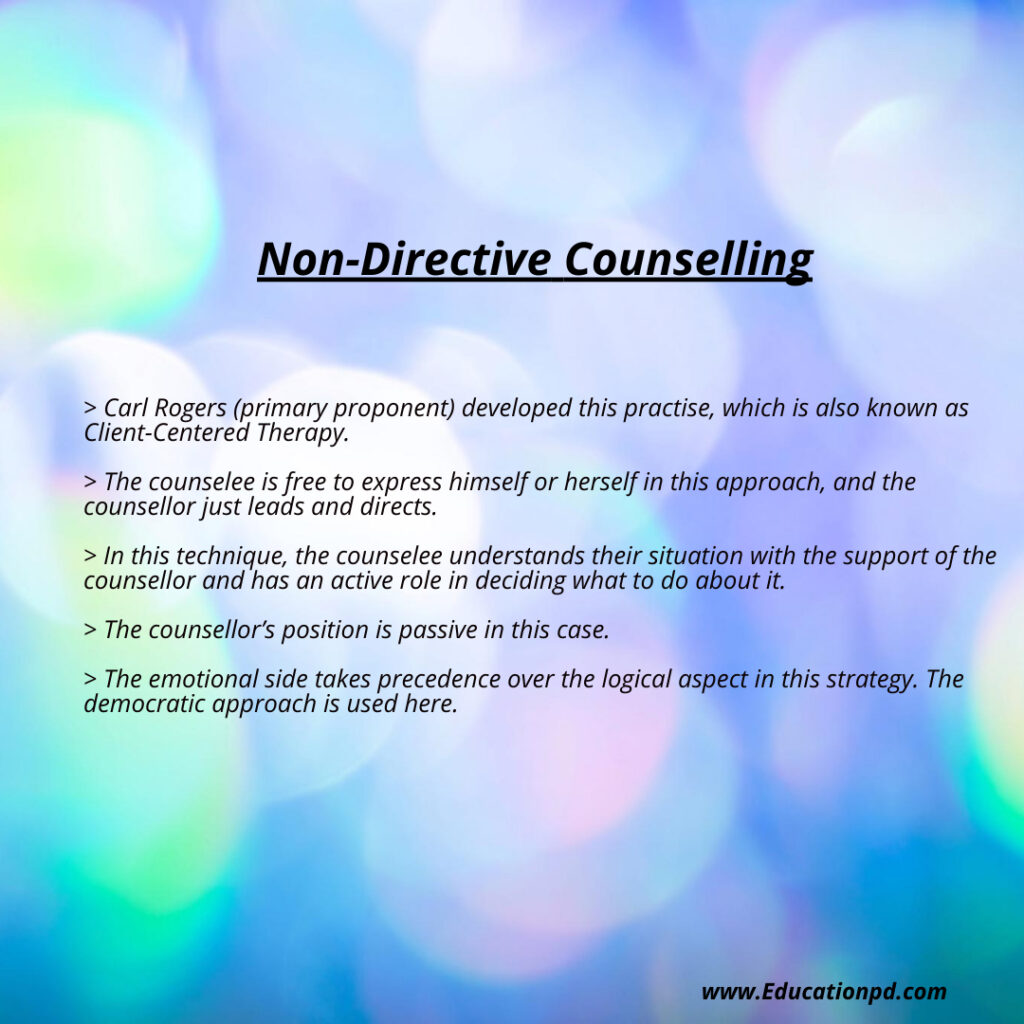
Merits of Non-Directive Counselling
- Freedom for counselee
- Democratic
- Counsellor shows empathy
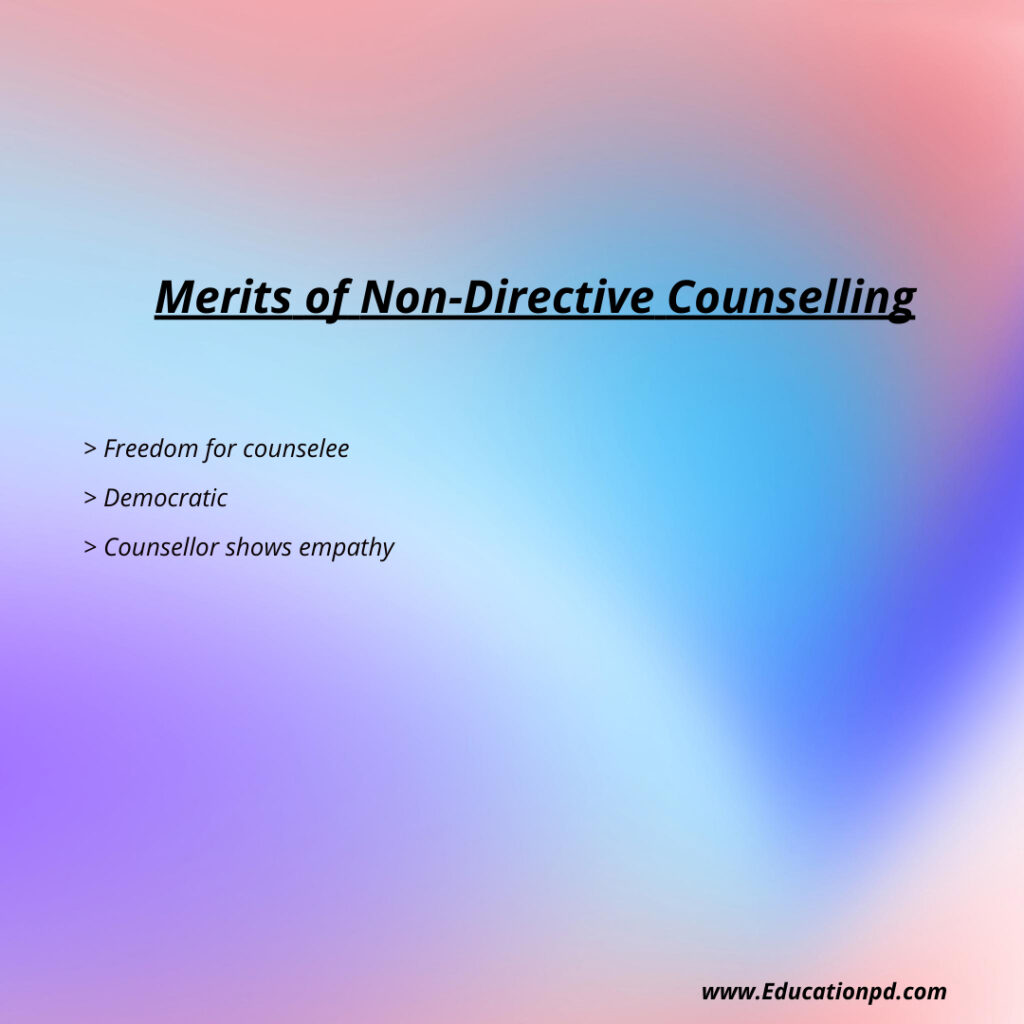
Demerits of Non-Directive Counselling
- Time consuming method
- It can not be used in schools at
- Counselee is in central position
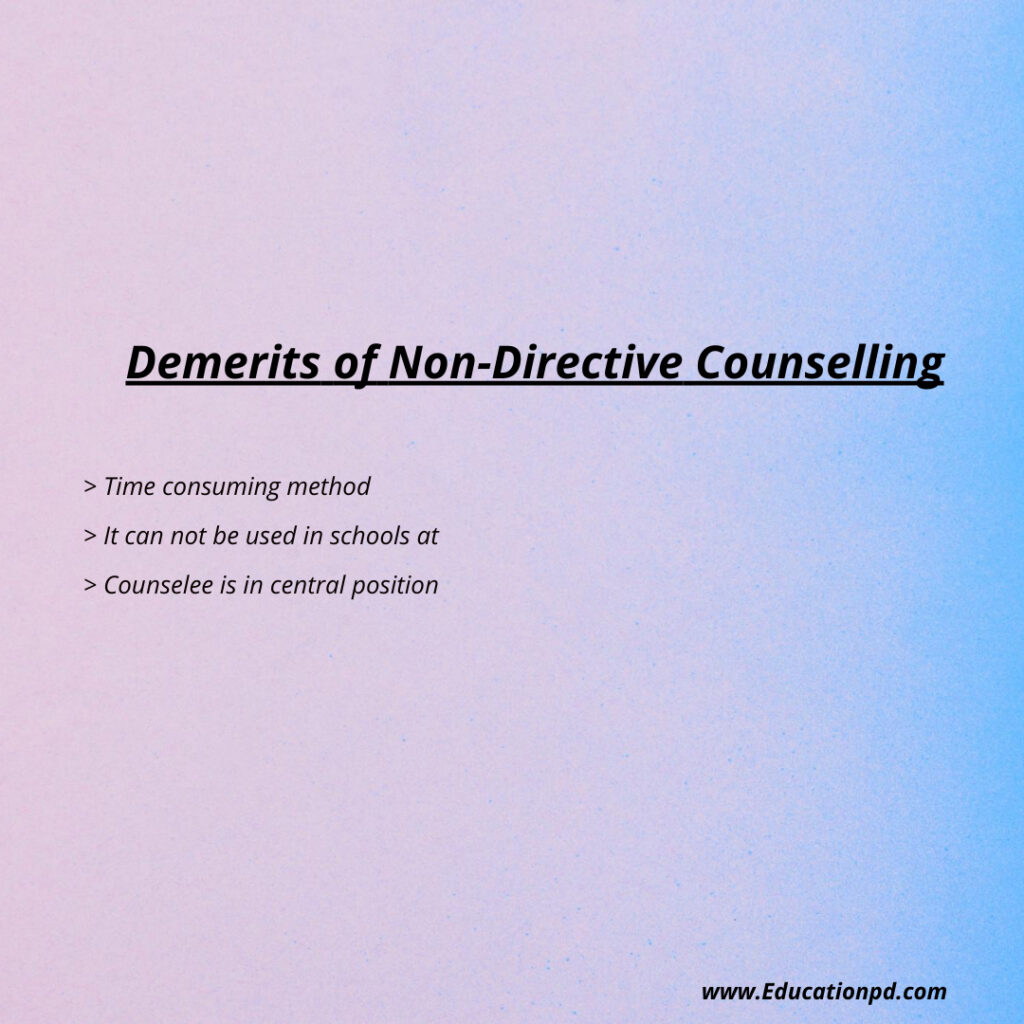
Step in Non Directive Counselling
- The counselee seeks assistance.
- The problem is identified by the counsellor.
- The counsellor encourages the counselee to express themselves freely about their issue.
- The counsellor accepts both negative and good feelings about the situation.
- Counselee’s observations or thoughts are now being translated into actions.
- Positive initiatives are being done to solve the situation.
- If the need for assistance decreases, the counselling procedure might be stopped.
